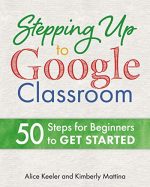Google Jamboard was essentially a digital whiteboard. What made it particularly exciting was that it was collaborative which opened up so many possibilities. While Jamboard is discontinued, FigJam is also a collaborative whiteboard that has so many more features to engage students.
2024: This blog post was updated to focus on FigJam digital whiteboard as my recommended replacement
Transition to FigJam
Update to this post: While Google is discontinuing Jamboard, the good news is that FigJam is everything that FigJam should have been. Like Jamboard, FigJam is a collaborative digital whiteboard.
Not Paper – Engage Students Jamboard
Paper tasks were designed for paper. Turning them into digital resources does NOT improve student engagement. It does NOT improve learning. My standard phrase is “Paperless is not a pedagogy.” To improve learning we need to do something DIFFERENT, otherwise AT BEST the learning will be the same. By the way, I am PRO PAPER! So many great reasons to use paper. I am NOT a proponent of going paperless, but rather to blend when technology can be better and when paper can be better. I am definitely anti-anti tech. Technology is definitely an integrated part of “the real world” and it is irresponsible to pretend it isn’t. The hard part, for me, is getting past what I am used to. Not being influenced by “what worked for me.”


Thinking Is Fun
What are your ideas? These are more interesting than someone else’s. Use FigJam to have students share what they think about a topic. The Sticky Note feature is my favorite! Have students add a Sticky Note with their idea. I then will enlarge a note to discuss it, then shrink it back down. Engage students Jamboard is now FigJam.
Version History
FigJam has a version history. Before I share with students I will use the I name this version TEMPLATE. If there are shenanigans in the FigJam I can always revert it back to the original version.

Group Student Ideas
Drag the Sticky Notes around on the FigJam. Group together like ideas. Ask students to observe patterns.
Critique the reasoning of others
The 8 mathematical principles is not just about math. They are the principles of critical thinking. MP3 (mathematical practice 3) says to “Critique the reasoning of others.” I let this be a driving force in my class. Share what you think, what will happen, what pattern you observe. Then ask students to debate the ideas. This is an easy way, but never a guaranteed way, to engage students in the lesson.














